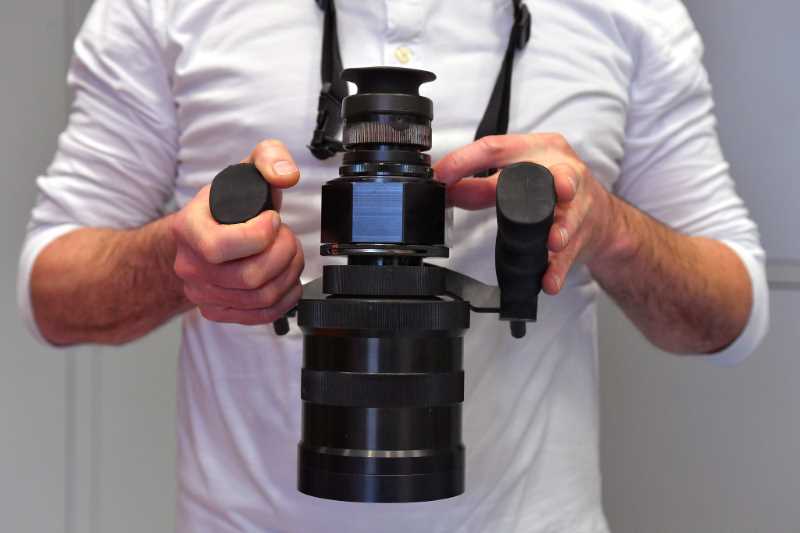
You know that eerie blue glow, indicating highly radioactive material? It’s called Cherenkov light, and it’s behind the success of a Canadian invention used around the world. Inspectors from the International Atomic Energy Agency (IAEA) carry the invention, called the Cherenkov Viewing Device, or CVD, to observe the glow produced by used nuclear fuel rods. After the rods have produced power in the reactor, they don’t look very different, but they are so highly radioactive they need to be stored five to ten metres under water for shielding and cooling. They also contain plutonium, which illicit groups could use to try to make a nuclear weapon. So the IAEA inspectors check the rods to make sure they are the Real McCoy, not fake or “dummy” rods substituted for the real ones. How is this done? Well, the old way would have been to lower a radioactivity meter into the water to take a measurement, a tricky and slow process, especially when there are hundreds of fuel bundles to be checked. Enter the CVD.
The Cherenkov light is faint, and it gets fainter as the rods’ radioactivity decays. As well, most of the emission is ultraviolet light, which we can’t see. So the CVD has been designed to capture that faint UV light, convert it into visible light after amplifying it, and displaying it in a viewer to the inspector. A team led by Dennis Chen at AECL’s Whiteshell Laboratories developed the CVD in the late 1980s, and it has gone on to be the IAEA’s most successful instrument for used-fuel verification. AECL built dozens of the latest model, the Mark IV, serviced them, and provided training courses to the IAEA inspectors. Canada’s technical contribution to the IAEA, the Canadian Safeguards Support Program, financed the R&D and training components for this instrument.
As inspectors gained experience with the CVD, they asked for improvements of various sorts. AECL let a contract to design and build a telephoto lens optimized for ultraviolet light, and fitted it to the Mark IV CVD. Greater sensitivity and resolution were also needed, to assess fuel of different types, including old fuel with weaker radioactivity. To meet this need, the emerging technology of digital imaging was investigated by the Whiteshell Labs team during the 1990s. In collaboration with Sweden, they designed a very sensitive digital CVD which was also capable of saving and processing the images collected at the reactor sites. Channel Systems, Inc., a small company in Pinawa, Manitoba, completed the design and has been manufacturing DCVDs for the IAEA and other customers around the world. Truly a Canadian success story!
P.S. The Society for the Preservation of Canada’s Nuclear Heritage does not yet have a CVD in its collection, but we’re looking!
